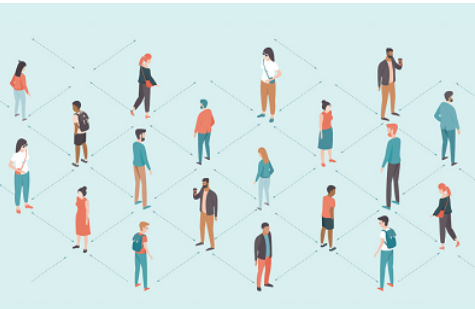|
June 2020
AutomatedBuildings.com
|
[an error occurred while processing this directive]
(Click
Message to Learn More)
|
Connected
Homes and Intelligent Buildings in the COVID-19 Era
The most important point is
that in the last 30 years technology for “connected homes and
intelligent buildings” is well positioned to help people and businesses
survive COVID-19.
|
 Ron
Zimmer Ron
Zimmer
President, CEO,
CABA
zimmer@caba.org
As published in
the inaugural CABA Journal.
|

COVID-19 has now impacted the world in a manner
not seen since the Spanish Flu over 100 years ago. Back in 2015, Bill
Gates predicted in a TED Talk that the world would soon experience a
“once in a century” pandemic. He urged governments and the private
sector to join forces and prepare for this pandemic or face the
consequences of economic turmoil and widespread death.
Similarly, President Obama also made
prescient forecasts of a pandemic and unfortunately not many prepared
for a virus like COVID-19. So today the new normal of shuttered
businesses, social isolation and unprecedented change is global. Every
country has been impacted by this virus and has been trying to cope and
map a strategy that will be effective for their citizens and economy.
Most countries are now making efforts to
open their economy and businesses to help their economies. The harsh
reality is that the virus could claim the lives of 2% of every person
infected. It appears that the endgame is to slow the virus until
“herd-immunity” or a vaccine will forestall and end this deadly virus.
If this is the new reality, what will be the short-term consequences
and how can “intelligent buildings (IB) and connected home”
technologies help society in this pandemic?
Intelligent
Buildings Can Help
As COVID-19 spread across the globe, by
governmental decree entire countries and cities closed like dominos. In
the wake, were ghost towns, deserted streets, parks and buildings.
Almost overnight businesses were forced to undertake a massive
organizational shift of either closing or deploying their staff to home
offices. This international social experiment was logistically complex
and unprecedented in scope.
Over the past decade some organizations had
been experimenting with “home-office or telework”, but most have never
had to engage almost their entire workforce. For many nations
this was a once in a lifetime test of their technology networks to see
if they could withstand the shifts in video, data and voice
traffic. Fortunately, the years of investment in solid networks
and IT infrastructure paid dividends as these networks allowed massive
numbers of people to work from home.
There was an added benefit for businesses
with buildings that had incorporated intelligent buildings technology.
Remote monitoring and diagnostics of energy, security and life-safety,
lighting, digital signage, now seemed like a great investment as stay
at home orders were enforced. Those organizations that also digitized
their operations, employed data analytics and artificial intelligence
could take advantage of sensors, monitors and digital twins.
As new rules and policies are enacted by
federal, state/provincial and municipal governments, technology can
assist in transitioning to this new reality. Many expect that new
building codes and regulations will be coming from all levels of
government, not just to set the new standards and benchmarks, but to
also help mitigate the litigation that is also likely to come with
COVID-19. What is very important is to show employees, customers
and guests that your buildings are safe and that health risks have been
eliminated or dramatically reduced.
One key example of the changes that have
occurred is the postponement or cancellation of all industry
conferences and events. The new norm is for virtual events or scaled
down webinars. Companies like CABA Board member Microsoft, Zoom and
Cisco Systems have all stepped in to meet the new demand for robust
video conferencing technology. Some pundits have said that business day
trips will likely never come back as webinars and video conferencing
has been shown to be so much more efficient and cost-effective.
While IB technology still has shortcomings,
it can be utilized to instill confidence and trust over healthcare and
protection to employees and others. To really achieve an economic
recovery, one big step is to show that buildings can be transformed
into safe and healthy environments. In fact, Mondor Intelligence is now
predicting that IB technology will grow globally at 23% CAG for the
next four (4) years.
The health care sector has always been a
leader in embracing IB technology and will increasingly take advantage
of new technology. Several examples include HVAC systems with filters
to attain the highest levels of indoor air quality. The use of
germicidal ultra-violet light has already been in widespread use with
both fixed lighting and robots. In fact, UV lighting will gain
mainstream acceptance as an acceptable way to kill COVID-19. Allied
Market Research states that UV lighting is already a $1B industry and
they are projecting that it will grow to over $3.4B by 2026.
So, what about energy and buildings? While
large buildings were cutting their energy usage, the energy usage
increased exponentially in suburbs. While the shifts in usage and new
patterns of energy use were challenging, utilities were able to cope.
It will be interesting to see if the ‘new normal’ will see an increase
in microgrids, renewables, electric vehicles, battery storage, etc.
This era may be the opportunity to switch to clean energy create less
traffic with more work from home and achieve not just a better
environment but help solve the global warming issue.
Connected Home Growth
The home office was thrust upon many people
with little warning and or time to prepare for the reality of COVID-19
and a new work environment. Throw in some home schooling for your
children and social isolation really created a new routine for many
people! It is fair to say that home office or telework has exploded and
there will be no going back to the old days. The C-Suite and managers
who would never accept employees working from home, have now had a
chance to see the positives of employees working from home. While it is
not for every employee or company, COVID-19 allowed them to test this
option and adjust their future workforce.
What has surprised many is that in most
cases robust networks and infrastructure have been solid and allowed
many employees to transition to their home office. Having cloud
technology, IT support and access to some of the best technology has
certainly helped in this workplace transition. Consumer electronic
sales, not just items for the home office, but gaming, music, smart
televisions, voice activated devices has exploded in the last two (2)
months.
Okay, it is agreed that consumer
electronics sales were already on a steep growth curve, with a record
number of devices being showcased at CES 2020. In addition, the wave of
Internet of Things (IoT) was also fueling this growth. Add millions of
people working from home to this formula and you have just added
steroids to this increased demand. In fact, IDC’s research states that
by 2025 there will be 41.6B connected IoT devices carrying 79
zettabytes of data.
What are some other immediate and
noticeable changes due to COVID-19? E-commerce was already becoming a
dominant force in retail and a thorn in the side of ‘bricks and mortar’
retail outlets. Shut down many of the retail outlets during COVID-19
and tell everyone to stay home was a boost for anyone providing on-line
sales and delivery. Amazon and Shopify are just two (2) examples of
organizations that have seen unprecedented growth. Unfortunately, a
number of small and large retail outlets will not survive this pandemic.
Telehealth and telemedicine have been
around for many years and with COVID-19 health and wellness has been
front and center for nearly everyone. Clearly COVID-19, due to
logistics and fear, created many more healthcare networks in the last
two (2) months. It is estimated that in the US alone there are now 200
million people using health care networks. In fact, in many
jurisdictions, telehealth was only just authorized due to the issues
related to this healthcare crisis.
There have been many positives related to
technology and as a result many businesses and essential services have
continued to function. Unfortunately, there are also dark forces
at work. Cybersecurity is still a major issue and cyber criminals
continue to prey on the unsuspecting or the vulnerable. Many people not
in the safety of their office and under the watchful eyes of their
corporate IT department, have experienced malware, identity theft
or ransomware.
[an error occurred while processing this directive]Privacy concerns are also a major issue and will
continue to be an issue. An example of this is whether entering a
business or having someone at the airport ask to take your
temperature. Refuse to comply and you will not be allowed
on that plane or into a certain building. Multiple research reports in
the last year including the CABA Landmark Research Report indicates
that cybersecurity and privacy concerns are the #1 and #2 reason why
consumers don’t buy connected home products and services!
Predictions and Opportunities
It is very clear that COVID-19 will be with
us for at least 1.5 – 2 years. Until someone is able to find a vaccine
or people can achieve ‘herd immunity’ of 60 -70%, society will be in a
slow dance with the devil. Once we are able to achieve a victory in
this war, then we can move to a more normal state. However, the new
normal will never be the old normal…. society, people, buildings,
technology will have changed dramatically forever.
So here are a few of my recommendations for
those in the “connected homes and intelligent buildings” sector:
- Everyone must
digitize…digitize…digitize!
- Form
task forces that should review every aspect of your operation. Bring in
non-traditional players such as medical experts, architects, etc.
- For OEMs of software and hardware,
analyze every product and service. Now is the time to invest in
R&D, especially to solve the problems of existing or new customers.
Drop products and services that are marginal.
- End-users, like builders, developers
and facility managers, should develop a strategic plan or Roadmap for
their buildings.
- Like a snowflake, each building is
unique, and priorities will differ, based on many factors.
- Realize that ‘home networking’ will
be a large part of the workforce going forward. Therefore, there may be
less need for the existing office space.
- Open office, hotelling and in-person
group work will be on hold for the foreseeable future.
- Understand and work with governments,
insurance companies and organizations, like ASHRAE, to understand the
new standards, rules and best practices.
- Based on this knowledge, work with
your legal team and develop new rules, regulations and contracts that
protect employees, customers and your business.
- Understand your insurance both for
liability and health and know that litigation related to COVID-19,
whether from employees or customers, will be a part of the future!!
The most important point is that in the last 30
years technology for “connected homes and intelligent buildings” is
well positioned to help people and businesses survive COVID-19.
Unfortunately, not every end-user is aware of what is available and how
it can assist them. Position your existing and new products/services
such that everyone benefits.
Finally,
work with CABA as we can help you …Connect to what’s next.TM
footer
[an error occurred while processing this directive]
[Click Banner To Learn More]
[Home Page] [The
Automator] [About] [Subscribe
] [Contact
Us]